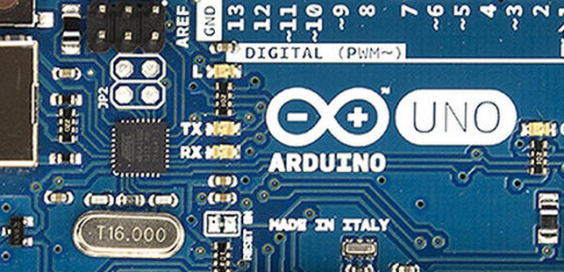Arduino at 10, iPad at five: Which is changing the world?
Written by Mel // July 18, 2015 // iPad // Comments Off on Arduino at 10, iPad at five: Which is changing the world?

Significant anniversaries for two very different, but still significant, technologies.

It’s a season of technology anniversaries, with two very different and very significant products celebrating milestone anniversaries, Arduino and the iPad. Both are built around ARM processors, but with very different aims and target markets. Both have also changed the world, one opening up the world of the Internet of Things, the other making carry-along computing a reality. But which one is going to be remembered down the line, 25 or 50 years from now?
Ten years ago, on the 28 March 2005 the first Arduinos hit the market. There’d been maker boards before, and the early days of computing were full of machines that gave users access to the IO ports. But Arduino did something different, crossing the barrier between general-purpose computer and programmable controller.
It’s a device that could be said to have kick-started the whole Maker community; giving homebrew engineers access to the controllers they needed to turn their ideas into reality. Wander around any Maker Fair, and you’ll find a hundred different ideas that Arduino has made real. It’s also brought computing to a whole new set of entrepreneurs, in fields (often literally) that weren’t traditionally seen as technology focused.
We’ve seen Arduino make its way into art, into food and into the intersection of both, winemaking, with sensors across vineyards and in the fermentation vats. It’s what many people think of when they think of the IoT – though in practice it’s an on-ramp, letting developers make quick prototypes using the Arduino’s many third-party modules and its simple Wiring programming environment to try out ideas in a relatively risk free manner. Taking the step from Arduino to other more commercial platforms is simple, with Wiring available for other ARM-based microcontrollers and for Intel’s Galileo and Edison systems.
In ten years Arduino has shaped an industry, showing that open hardware can sell – and sell well. It’s inspired a generation of Makers to start automating their creations, and with variants like the wi-fi-enabled Arduino Yun, it’s begun to become one of the foundations of the IoT. As an educational tool it’s brought device programming to elementary and secondary schools, and shown that simple computers needn’t be simplistic.
April 3rd 2010 was the day the first iPads went on sale. There’d been tablet devices around for more than a decade before – including Apple’s own Newton slate. But none had been successful, even with the marketing weight of industry giants behind concepts like the Ultra Mobile PC. iPad was different, there were days long queues outside Apple stores the night before it launched; we stood across the road in Palo Alto that night watching TV crews interview the waiting aficionados.
iPad changed the way we looked at tablets, no longer PCs with touch screens, but a device category in their own right; somewhere between phones and netbooks. And soon there were no more netbooks, Google was inflating Android for bigger screens, and Microsoft was rethinking Windows for a new generation of hardware. They’ve got bigger, and smaller, as well as filling a wide range of price brackets. Now you can pick up a 2-in-1 PC/tablet hybrid at ultrabook prices, or an Intel Atom-powered device for less than $75. They might not be iPads, but their slate-like designs mean they’re definitely its descendants – and that they’re most definitely not PCs.
Both iPad and Arduino are revolutionary devices, inspiring very different revolutions. But revolutions fade away, becoming the new establishment. That’s what’s happened with iPad, it and its cadres of followers are becoming the mainstream. Windows, that most mainstream of operating systems, is being redesigned for touch and for tablet devices, a process that’s taken us from Windows 8 to Windows 10. Touch computing and small devices are everywhere now. They can’t be ignored, but at the same time, they’re becoming the everyday. It’s a revolution that’s been co-opted and re-routed, a flicker of the Summer of 68 in computational form.
Things are very different with Arduino. It’s still at heart an underground movement, even though devices like Raspberry Pi have gained a grudging respectability in education – with sold out low-cost devices. While the mainstream is working with Arduino, it’s on its terms, as a platform for making things, for exploring and learning. Windows 10 may have its IoT, but it’s still the Things’ Internet. But with the prospect of billions and billions of smart devices as we wire up the world with sensors, it’s clear that if one revolution is really changing the world, it’s Arduino’s.
Let’s check back in another decade and see where things have gone.


